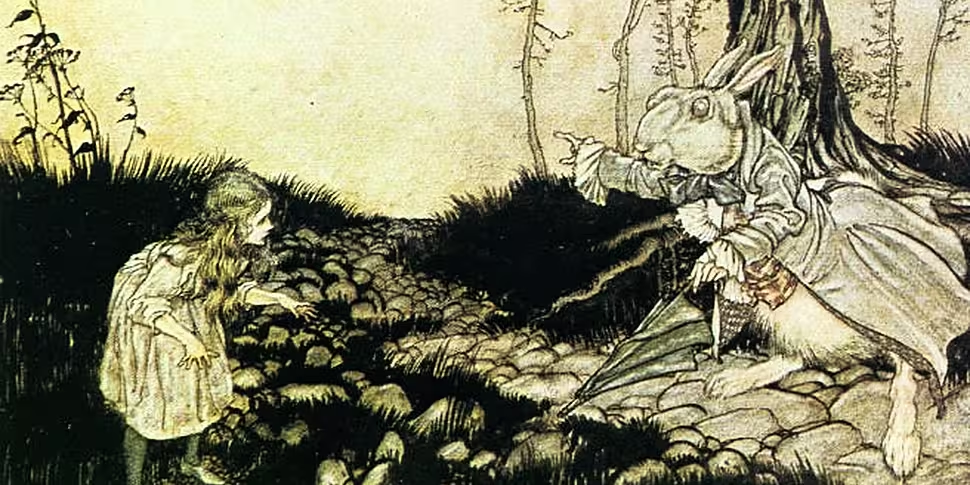150 years ago the story of a little girl falling down a rabbit hole captured the world’s imagination. But did author Lewis Carroll develop an unhealthy infatuation with the 11-year-old who inspired Alice's Adventures in Wonderland? Or are today's morals distorting the Victorian age whereupon children's innocence was celebrated?
Better known by his pen name Lewis Carroll, Charles Lutwidge Dodgson was an accomplished mathematician and photographer during his own life. Born into a large religious family in 1832, he followed his father’s footsteps into Christ Church college, Oxford. Though an easily distracted student Dodgson’s natural ability earned him a lectureship in 1855.
Initially unhappy at Oxford, Dodgson would stay on at this post for the rest of his life. Here he witnessed the increasing abstraction of maths as strange new ideas about theoretical numbers began to change how the discipline worked. It was these new schools of thinking in fact that helped inspire the bizarre worlds seen in Alice’s Adventures and Through the Looking-Glass, as opposed to any illicit or hallucinogenic substances.
The story itself, or the structure on which it was built, was born from a boating trip down the Isis and a girl’s pleading for a story. In 1856 Henry Liddell arrived as the new Dean of Christ Church with his young family in tow. Dodgson became close with the family and began to take the Liddell children, and adult friends, on boat trips to nearby villages.
It was while rowing to Godstow on a rainy day in July, 1862, that Dodgson began to weave the story of Wonderland to entertain the three young Liddell girls. The middle of the three, Alice, urged him to write the story down and three years later Alice’s Adventures in Wonderland was published. It was voraciously consumed by the public and even boasted Queen Victoria as an ardent fan. By 1866 though, the Liddells had distanced themselves from Dodgson.
This break, coupled with the missing pages from his 1853-63 diaries, have fuelled speculation about Dodgson’s sexuality. Were the pages destroyed to hide an unhealthy infatuation with young girls and a proposal to the 11-year-old Alice? Or are we allowing modern morals to distort the Victorian world where children and their innocence were celebrated?
As Oxford Professor of English, Robert Douglas-Fairhurst and author of The Story of Alice explains: “At the time he was seen as wholly innocent. Since then he’s been seen as increasingly creepy. And what that means I suppose is that he too is simply reflected everything that’s been going on around him in terms of how we think about children and about childhood and about sexuality and about ourselves.”
Listen back as Susan and Robert explore the reality behind Wonderland, starting at 22 minutes.
Tonight's music to read to:
Andrei Machado provides the music for the first part of the show with 'Sobre a Brevidada da Vida' opening the show and 'Somos Poeira de Estrelas' bringing part one to a close. Julianna Barwick's 'Forever' closes out the show.









